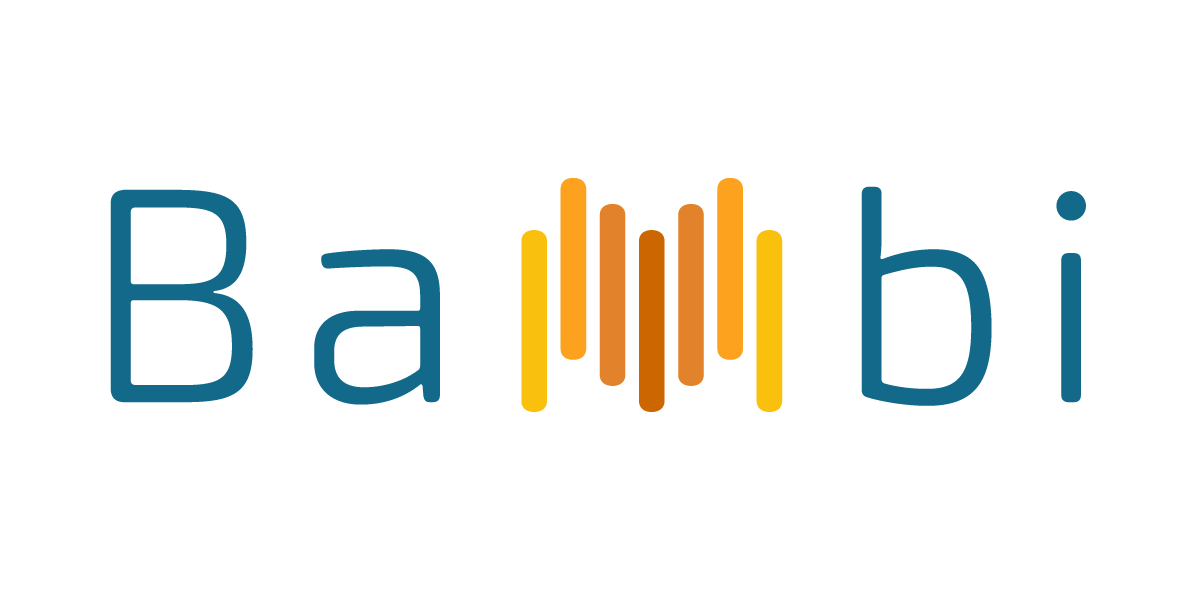BAyesian Model-Building Interface in Python
Bambi is a high-level Bayesian model-building interface written in Python. It's built on top of the PyMC probabilistic programming framework, and is designed to make it extremely easy to fit mixed-effects models common in social sciences settings using a Bayesian approach.
Bambi requires a working Python interpreter (3.10+). We recommend installing Python and key numerical libraries using the Anaconda Distribution, which has one-click installers available on all major platforms.
Assuming a standard Python environment is installed on your machine (including pip), Bambi itself can be installed in one line using pip:
pip install bambi
Alternatively, if you want the bleeding edge version of the package you can install from GitHub:
pip install git+https://github.com/bambinos/bambi.git
Bambi requires working versions of ArviZ, formulae, NumPy, pandas and PyMC. Dependencies are listed in pyproject.toml and should all be installed by the Bambi installer; no further action should be required.
In the following two examples we assume the following basic setup
import arviz as az
import bambi as bmb
import numpy as np
import pandas as pdA simple fixed effects model is shown in the example below.
# Read in a dataset from the package content
data = bmb.load_data("sleepstudy")
# See first rows
data.head()
# Initialize the fixed effects only model
model = bmb.Model('Reaction ~ Days', data)
# Get model description
print(model)
# Fit the model using 1000 on each chain
results = model.fit(draws=1000)
# Key summary and diagnostic info on the model parameters
az.summary(results)
# Use ArviZ to plot the results
az.plot_trace(results) Reaction Days Subject
0 249.5600 0 308
1 258.7047 1 308
2 250.8006 2 308
3 321.4398 3 308
4 356.8519 4 308
Formula: Reaction ~ Days
Family: gaussian
Link: mu = identity
Observations: 180
Priors:
target = mu
Common-level effects
Intercept ~ Normal(mu: 298.5079, sigma: 261.0092)
Days ~ Normal(mu: 0.0, sigma: 48.8915)
Auxiliary parameters
sigma ~ HalfStudentT(nu: 4.0, sigma: 56.1721)
mean sd hdi_3% hdi_97% mcse_mean mcse_sd ess_bulk ess_tail r_hat
Intercept 251.552 6.658 238.513 263.417 0.083 0.059 6491.0 2933.0 1.0
Days 10.437 1.243 8.179 12.793 0.015 0.011 6674.0 3242.0 1.0
Reaction_sigma 47.949 2.550 43.363 52.704 0.035 0.025 5614.0 2974.0 1.0
First, we create and build a Bambi Model. Then, the method model.fit() tells the sampler to start
running and it returns an InferenceData object, which can be passed to several ArviZ functions
such as az.summary() to get a summary of the parameters distribution and sample diagnostics or
az.plot_trace() to visualize them.
In this example we will use a simulated dataset created as shown below.
data = pd.DataFrame({
"g": np.random.choice(["Yes", "No"], size=50),
"x1": np.random.normal(size=50),
"x2": np.random.normal(size=50)
})Here we just add the family argument set to "bernoulli" to tell Bambi we are modelling a binary
response. By default, it uses a logit link. We can also use some syntax sugar to specify which event
we want to model. We just say g['Yes'] and Bambi will understand we want to model the probability
of a "Yes" response. But this notation is not mandatory. If we use "g ~ x1 + x2", Bambi will
pick one of the events to model and will inform us which one it picked.
model = bmb.Model("g['Yes'] ~ x1 + x2", data, family="bernoulli")
fitted = model.fit()After this, we can evaluate the model as before.
For a more in-depth introduction to Bambi see our Quickstart and check the notebooks in the Examples webpage.
The Bambi documentation can be found in the official docs
If you use Bambi and want to cite it please use
@article{Capretto2022,
title={Bambi: A Simple Interface for Fitting Bayesian Linear Models in Python},
volume={103},
url={https://www.jstatsoft.org/index.php/jss/article/view/v103i15},
doi={10.18637/jss.v103.i15},
number={15},
journal={Journal of Statistical Software},
author={Capretto, Tomás and Piho, Camen and Kumar, Ravin and Westfall, Jacob and Yarkoni, Tal and Martin, Osvaldo A},
year={2022},
pages={1–29}
}Bambi is a community project and welcomes contributions. Additional information can be found in the Contributing Readme.
For a list of contributors see the GitHub contributor page
If you want to support Bambi financially, you can make a donation to our sister project PyMC.
Bambi wishes to maintain a positive community. Additional details can be found in the Code of Conduct

